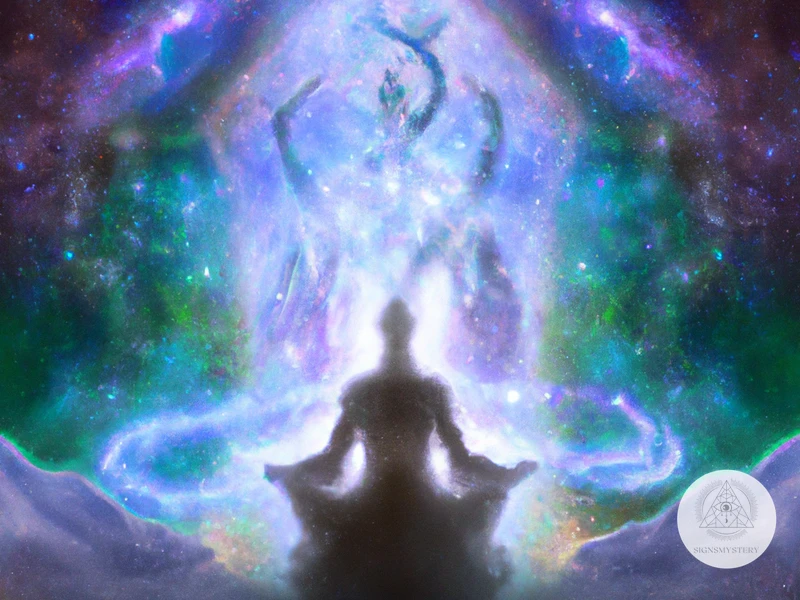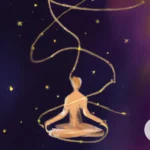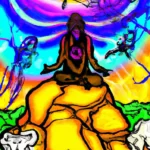Have you ever heard of shamanic journeying or astral projection? These are two metaphysical practices that involve exploring different realms of consciousness beyond our physical world. While some people may think they are the same thing, there are actually some significant differences between the two. In this article, we’ll explore what shamanic journeying and astral projection are, their benefits, how to practice them, and most importantly, the differences that set them apart. So grab a comfortable seat and let’s dive into the mystical world of shamanic journeying and astral projection.
What is Shamanic Journeying?

Shamanic Journeying is an ancient spiritual practice used for exploring the hidden realms of consciousness. It is a way to access the spiritual world and communicate with spirits, power animals, and other entities. During the journey, practitioners enter a state of consciousness where they can access different levels of reality and receive knowledge, guidance, and healing from the spirit world. Some benefits of shamanic journeying include increased self-awareness, personal growth, and spiritual awakening. To practice shamanic journeying, it is important to prepare yourself by setting intentions, finding a safe and comfortable place to journey, and entering a meditative state. Various techniques like drumming, rattling, or visualization can be used to enter trance and reach different states of consciousness. Power animals, spirit helpers, and other guides can also assist in the journey. If you are interested in learning more, you can check out this guide for shamanic journeying basics or this overview on the healing power of shamanic journeying.
Benefits of Shamanic Journeying
Shamanic journeying is a powerful technique that allows us to access alternate realms of reality for spiritual insights and personal growth. Apart from its mystic experiences, there are several benefits of shamanic journeying, which are mentioned below:
| Benefits of Shamanic Journeying |
|---|
| 1. Spiritual Healing: One of the significant benefits of shamanic journeying is spiritual healing. It can help you connect with spiritual guides and gain insights, leading to a profound level of healing and cleansing. |
| 2. Stress Relief: The journey into alternate realms can also help reduce stress levels. You get to leave the material world behind and travel to a peaceful, serene space. |
| 3. Self-Discovery: Shamanic journeying can also help you gain deeper insight into yourself. You can use these spiritual experiences to learn more about your innermost thoughts and desires, leading to personal growth. |
| 4. Problem Solving: Another benefit of shamanic journeying is the opportunity to consult with spirit guides and receive solutions. They can provide you with guidance and help you find answers to your life’s problems. |
| 5. Creativity and Inspiration: Shamanic journeying can also help bring out your creativity and help you get inspiration for your projects. |
The benefits of shamanic journeying are not limited to these. You can learn more about preparing for your shamanic journey, tips for exploring the Lower World, and how often to practice shamanic journeying to get the most out of it. Additionally, avoiding common shamanic journeying mistakes is also important to ensure your experience is safe and effective.
How to Practice Shamanic Journeying
To practice shamanic journeying, it’s important to find a quiet and comfortable place where you won’t be disturbed. Here are the steps to follow:
| Step 1: | Set your intention. Decide what you want to achieve through your journey. Are you seeking guidance, healing, or answers to questions? |
| Step 2: | Create a sacred space. You can use crystals, smudging, or other items to create a calm and peaceful atmosphere that fosters positive energy for your journey. |
| Step 3: | Begin your journey. You can use a drum, rattle, or other repetitive sound to alter your consciousness into a shamanic state. Enter your journey with your intention in mind. |
| Step 4: | Meet your power animal. This is an important aspect of shamanic journeying. Your power animal is a helper that guides and protects you. Allow yourself to receive any messages or guidance from them. |
| Step 5: | Explore the upper or lower spiritual realms. These realms hold messages, guidance, and healing for you. Decide which realm to explore based on your intention. |
| Step 6: | Return from your journey. When you feel it’s time to return, thank your power animal and any other guides you met along the way. Return to your physical body by focusing on your breath and becoming aware of your surroundings. |
Remember that Shamanic journeying is a personal experience, so don’t compare yourself to others. With regular practice, you can strengthen your ability to journey and receive guidance from the spiritual realms. If you’re looking for more information on shamanic journeying, you can read about the different states of consciousness you can achieve during a journey, or learn more about power animals and how to connect with them. You may also consider exploring the upper world journey or under world journey for different types of experiences.
What is Astral Projection?
Astral projection is the practice of separating the consciousness from the physical body and traveling to different planes of existence. This practice is also known as out-of-body experience (OBE) and is often achieved through deep meditation, visualization, or lucid dreaming. During astral projection, the individual may experience a range of sensations including floating or flying, vivid colors, and encounters with different entities or beings. Benefits of astral projection, as reported by practitioners, include gaining spiritual insight, discovering past lives, and overcoming fears and anxiety. However, it’s important to note that not everyone believes in the reality of astral projection and some skeptics suggest that the experiences are purely hallucinatory or imaginative.
Benefits of Astral Projection
Astral Projection, also known as out-of-body experience, has been a subject of fascination for centuries due to its potential benefits. Here are some of them:
| 1. Increased Self-Awareness: Astral Projection allows you to see yourself from a different perspective, and this can enhance your self-awareness and encourage personal growth. |
| 2. Stress Reduction: While astral projecting, you can leave behind the stresses of everyday life and enter a state of calm and relaxation, providing a much-needed break from the worries of the physical world. |
| 3. Meeting Spiritual Guides: Many people report meeting spiritual guides, angels, or deceased loved ones during astral projection, which can provide insight and guidance. |
| 4. Exploring Different Realms: Astral Projection can take you to different places, such as different planets, dimensions, and even times, providing a unique and fulfilling experience. |
| 5. Overcoming Fear of Death: Experiencing astral projection can help overcome a fear of death and provide a sense of comfort in the belief that consciousness can exist without a physical body. |
It’s important to note that while astral projection can offer potential benefits, it’s essential to approach it with caution and in a responsible manner. It’s not recommended for those with mental health issues, and it’s crucial to prepare yourself mentally and physically before attempting astral projection.
How to Practice Astral Projection
Practicing Astral Projection can be a challenging endeavor, but the benefits of mastering this skill can be incredibly rewarding. Below are some tips and techniques on how to practice Astral Projection:
1. Prepare your Mind and Body
Practicing Astral Projection requires a deep level of relaxation and concentration. Make sure you are in a calm and peaceful environment where you won’t be disturbed. Wear comfortable clothes and eliminate any distractions that might inhibit your focus. You can also try practicing simple relaxation exercises or meditation beforehand to help clear your mind and relax your body.
2. Visualization Techniques
Visualization is an essential component of Astral Projection. Focus on an image, thought, or feeling that resonates with you. The more vividly you can visualize yourself in another space, the more likely you are to achieve a state of Astral Projection. Some people like to picture themselves floating or flying over their physical body, while others prefer to imagine themselves exploring other realms or dimensions.
3. Energy Work
Many practitioners of Astral Projection believe that energy work is essential for achieving success in this practice. Techniques such as Reiki, Qigong, or Tai Chi can help you cultivate your body’s energy and promote a deeper sense of relaxation and focus. You can also try visualizing your body being filled with light or positive energy to support your Astral Projection experience.
4. Mnemonic Induction of Lucid Dreams (MILD)
MILD is a technique that involves waking up in the middle of the night and focusing on the intention to have a lucid dream. This technique can also be used to facilitate Astral Projection. As you’re falling back asleep, repeat a mantra or phrase to yourself such as “I will have a lucid dream” or “I will have an out-of-body experience.” This technique can help you maintain a focused and intentional mindset as you begin to drift into a relaxed state.
5. Binaural Beats
Binaural beats are a type of sound therapy that uses specific sound frequencies to induce a deep state of relaxation and focus. You can find binaural beats tracks that are specifically designed for Astral Projection. You can use headphones to listen to the tracks as you practice, allowing the beats to guide your brain into the desired state.
Practicing Astral Projection can be a powerful tool for expanding your consciousness and exploring new realms of awareness. While it may take some time and effort to master, with patience and persistence, anyone can learn how to achieve the state of Astral Projection.
Common Misconceptions about Astral Projection
Common Misconceptions about Astral Projection:
There are many misconceptions about astral projection that can create fear in people who want to try it. Let’s take a closer look at some of these.
| Misconception | Truth |
|---|---|
| Astral projection is a dangerous practice and can lead to possession by evil entities. | This is a common misconception perpetuated by media. However, there is no evidence to support that astral projection is dangerous, and there are countless positive experiences reported. As long as practitioners take proper precautions and maintain a positive mindset, there is no reason to fear possession or negative entities. |
| Astral projection is only for the spiritually advanced and cannot be learned by everyone. | Anyone can learn to astral project with practice and patience. While it may be easier for those who are spiritually inclined, everyone has the ability to explore the astral realm. |
| You can get lost in the astral realm and never find your way back to your body. | This is another common misconception that is not true. Your astral body is connected to your physical body by a cord, and you will always be able to return to your body when you are ready. Additionally, practicing proper grounding techniques can help ensure a smooth and safe return to your body. |
| Astral projection is the same as lucid dreaming. | While there are similarities, astral projection is a unique experience that involves leaving your physical body entirely and exploring the astral realm. In contrast, lucid dreaming involves becoming aware that you are dreaming while still in your physical body. |
| Astral projection is a form of escapism and not a valuable spiritual practice. | Astral projection can be a valuable spiritual practice that allows for personal growth and exploration of the unknown. It can also provide a deeper understanding of oneself and the universe. |
By dispelling these misconceptions, individuals who are interested in astral projection can approach it from a place of knowledge and understanding, rather than fear.
What are the Differences Between Shamanic Journeying and Astral Projection?
Shamanic journeying and astral projection are two distinct spiritual practices that have some striking differences. Their Origins and Purposes: Shamanic journeying has its roots in indigenous cultures and has been traditionally used for spiritual healing and guidance. On the other hand, astral projection is a practice that emerged from spiritual and occult traditions and aims at exploring and experiencing other realms beyond the physical world. Their Techniques and States of Consciousness: In shamanic journeying, the practitioner enters an altered state of consciousness through rhythmic drumming or other techniques, whereas astral projection is achieved through deep relaxation and visualization. Their Experiences and Realms: Shamanic journeying involves traveling to the three worlds- the upper, middle, and lower world- where the practitioner meets their spirit helpers, ancestors, and understand their place in the universe. In contrast, astral projection focuses on
Subscribe to Our Newsletter
Sign up to receive the latest news and updates.
Their Origins and Purposes
The Origins and Purposes of Shamanic Journeying and Astral Projection
While both Shamanic Journeying and Astral Projection involve experiencing non-ordinary states of consciousness, they have different origins and purposes.
Shamanic Journeying originated from shamanic traditions, which date back thousands of years and differ from region to region. These traditions are rooted in animism, which is the belief that all things in nature have a spirit. Shamans used journeying as a way to communicate with these spirits and gain insight into the world around them. The purpose of Shamanic Journeying is to connect with one’s spirit guides, power animals or other helpful spirits, to receive guidance, healing, and messages to help one navigate through life.
On the other hand, Astral Projection has its roots in various esoteric and spiritual practices, including Theosophy, Hermeticism, and Yoga. The purpose of Astral Projection is to explore and experience other dimensions, universes, and planes of existence beyond the physical reality we’re used to. In Astral Projection, a person’s consciousness separates from their physical body, allowing them to move freely in the astral realm and explore their inner selves or different dimensions.
Here is a summary of their origins and purposes in a table:
| Shamanic Journeying | Astral Projection |
|---|---|
| Originated from shamanic traditions rooted in animism. | Rooted in various esoteric and spiritual practices, including Theosophy, Hermeticism, and Yoga. |
| Purpose is to connect with one’s spirit guides, power animals, or other helpful spirits, to receive guidance, healing, and messages to help one navigate through life. | Purpose is to explore and experience other dimensions, universes, and planes of existence beyond the physical reality we’re used to. |
Understanding the origins and purposes of these practices is crucial for those who want to incorporate them into their spiritual growth and development. By understanding the purpose, one can set the right intention and create a suitable environment to practice Shamanic Journeying or Astral Projection.
Their Techniques and States of Consciousness
When it comes to techniques and states of consciousness, Shamanic Journeying and Astral Projection differ significantly. Shamanic Journeying is typically practiced through specific techniques, such as drumming, guided visualization, or chanting. These techniques allow the practitioner to enter a trance-like state of consciousness where they can connect with the spirit world. In contrast, Astral Projection is often practiced through meditation, lucid dreaming, or out-of-body experiences, where practitioners aim to detach their consciousness from their physical body and explore higher dimensions of existence.
In Shamanic Journeying, the practitioner will usually experience a wide range of emotions and sensations, from euphoria and bliss to fear and discomfort. They may encounter different spirits or energy entities, and the experience can be quite intense. On the other hand, Astral Projection usually involves a sense of weightlessness and detachment, with the practitioner feeling as though they are floating or flying through space. They may also experience different levels of consciousness, such as the Astral plane or higher spiritual realms.
It’s important to note that both Shamanic Journeying and Astral Projection require significant practice, and it’s not uncommon for practitioners to struggle with achieving the desired state of consciousness. Additionally, it’s crucial for practitioners to approach these practices with respect and caution, as they can be powerful experiences that can have a profound impact on one’s spiritual well-being.
Their Experiences and Realms
Shamanic journeying and astral projection can lead to vastly different experiences and encounters in alternate realms.
In shamanic journeying, the individual typically travels to the three shamanic realms: the Lower World, Middle World, and Upper World. These realms are believed to be inhabited by various spirits and beings, each with their own unique energy and wisdom to offer. The Lower World is often associated with the spirits of nature and animals, while the Middle World is the physical world we live in and the Upper World is a celestial realm inhabited by deities and enlightened beings.
On the other hand, during astral projection, individuals may encounter a variety of different realms and planes of existence. These can be physical or non-physical in nature, ranging from other planets and galaxies to alternate dimensions and planes of existence. Some may even experience encounters with extraterrestrial beings or other forms of life.
It’s important to note that the experiences and encounters during shamanic journeying and astral projection are highly subjective and can vary greatly from person to person. The individual’s beliefs, intentions, and level of consciousness can greatly influence what they encounter during these practices.
| Shamanic Journeying | Astral Projection |
|---|---|
| Travels to 3 shamanic realms: Lower World, Middle World, Upper World | May encounter multiple physical and non-physical realms and planes of existence |
| Encounters with spirits and beings in these realms | Possible encounters with extraterrestrial beings or other forms of life |
| Experiences are highly subjective and influenced by beliefs and consciousness level | Experiences are highly subjective and influenced by beliefs and consciousness level |
The experiences and realms encountered during shamanic journeying and astral projection offer unique opportunities for growth, self-discovery, and spiritual exploration. By understanding the differences between these practices, individuals can choose the one that resonates with them personally and embark on a journey of self-discovery and spiritual growth.
Conclusion
After going through all the information about shamanic journeying and astral projection, it is clear that both techniques offer unique experiences and benefits. Shamanic journeying focuses on connecting with spirit guides and receiving guidance for personal growth, whereas astral projection is more focused on exploring the universe and gaining new insights into the nature of reality.
Both practices require a certain level of skill and dedication to achieve, and it’s important to approach them with respect and the right mindset. Furthermore, it’s essential to understand that there are potential risks involved with both practices, and individuals should only practice these techniques under the guidance of experienced practitioners.
In conclusion, while shamanic journeying and astral projection are often used interchangeably, they are distinct practices with different purposes, techniques, experiences, and realms. When approached with an open mind and the right intentions, both practices have the potential to offer incredible spiritual insights and personal growth. It’s up to individuals to determine which practice resonates more with their goals and personality and commit to that practice with the necessary discipline and patience.
Frequently Asked Questions
FAQ #1: Can everyone practice Shamanic Journeying and Astral Projection?
Yes, anyone can practice Shamanic Journeying and Astral Projection as long as they are willing to learn and practice the techniques.
FAQ #2: Is Shamanic Journeying a spiritual practice?
Yes, Shamanic Journeying is a spiritual practice that involves connecting with the spiritual realm to gain insight, healing, and guidance.
FAQ #3: Is Astral Projection the same as an out-of-body experience?
Yes, Astral Projection is considered an out-of-body experience because it involves the sensation of leaving the physical body and exploring the spiritual realm.
FAQ #4: Can Shamanic Journeying be harmful?
No, Shamanic Journeying is generally considered safe as long as it is practiced responsibly and with the guidance of a knowledgeable practitioner or teacher.
FAQ #5: Can Astral Projection be dangerous?
There are some risks associated with Astral Projection, such as encountering negative entities or having difficulty re-entering the physical body. It is important to practice Astral Projection with caution and to seek guidance from experienced practitioners.
FAQ #6: Do Shamanic Journeying and Astral Projection require special equipment?
No, both practices can be done without any special equipment. However, some practitioners may use drums, crystals, or other tools to enhance their experience.
FAQ #7: Can I practice Shamanic Journeying and Astral Projection on my own?
Yes, you can practice both techniques on your own. However, it is recommended to seek guidance from a knowledgeable teacher or practitioner, especially if you are new to these practices.
FAQ #8: Do Shamanic Journeying and Astral Projection have any scientific basis?
Both practices are not yet fully understood by science, but there are some studies that suggest they may have therapeutic benefits for mental and physical health.
FAQ #9: Are there any cultural or religious implications associated with Shamanic Journeying?
Shamanic Journeying has its roots in various indigenous cultures, and it is sometimes associated with specific religious or spiritual beliefs. However, it can also be practiced as a secular technique for personal growth and insight.
FAQ #10: Can Shamanic Journeying and Astral Projection be practiced together?
Yes, some practitioners may choose to combine elements of Shamanic Journeying and Astral Projection in their practice. However, it is important to understand the differences and techniques of each practice before attempting to combine them.










